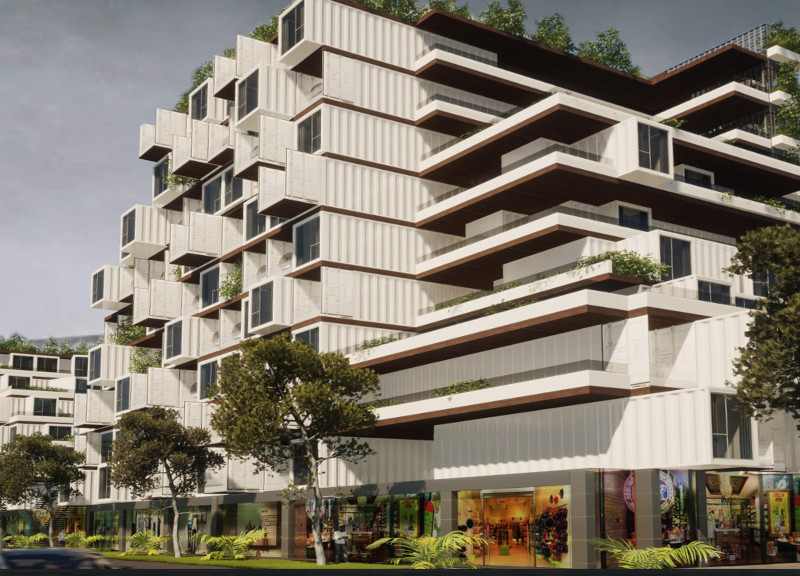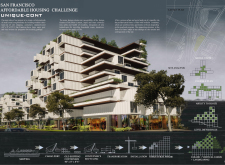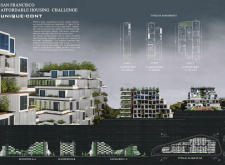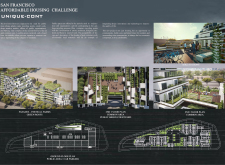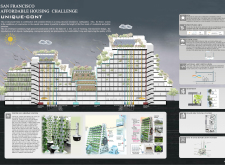5 key facts about this project
Modular Living Spaces
The primary function of the project is to offer flexible and accessible housing options tailored to the needs of diverse urban populations. Each housing unit is constructed from repurposed shipping containers, which are structurally sound and adaptable. The apartments vary in size and configuration, allowing for different family structures and lifestyles. This modular approach ensures a fast and cost-effective construction process without compromising quality.
The architectural design features common areas strategically placed on lower levels, promoting social interaction and community cohesion. Spaces such as shops and workspaces encourage residents to engage with their surroundings, enhancing the overall living experience. The external appearance of the building reflects a modern aesthetic while incorporating sustainable elements that harmonize with the urban fabric.
Sustainability and Environmental Responsiveness
A key aspect of this project is its dedication to sustainable practices. By utilizing shipping containers, the design minimizes waste associated with traditional construction methods. The incorporation of green roofs not only improves insulation but also contributes positively to local biodiversity and the urban ecosystem.
Vertical farming systems are installed on building facades, allowing residents to cultivate crops within an urban setting. This feature reduces reliance on transported food, complements a zero-waste policy, and supports community nutrition. Additionally, the project integrates rainwater harvesting systems for irrigation and non-potable usage, further enhancing resource efficiency.
Community Integration and Urban Context
The design prioritizes community integration, emphasizing public spaces and communal amenities that serve the needs of residents and the broader neighborhood. These spaces are designed to be multifunctional, inviting various activities that foster social interaction and engagement. The thoughtful planning of these areas acknowledges the urban context, creating a coherent relationship between the building and its surroundings.
Encouraging environmental stewardship, the project introduces designated recycling points and waste management programs that actively involve residents. This participatory approach not only educates residents on sustainability practices but also cultivates a sense of ownership and pride in their living environment.
For a comprehensive understanding of the architectural plans, sections, and design ideas behind this project, readers are encouraged to explore the presentation in detail. Engaging with the architectural designs will provide further insights into the innovative approaches utilized within this housing initiative, illustrating a forward-thinking solution to urban living challenges.


